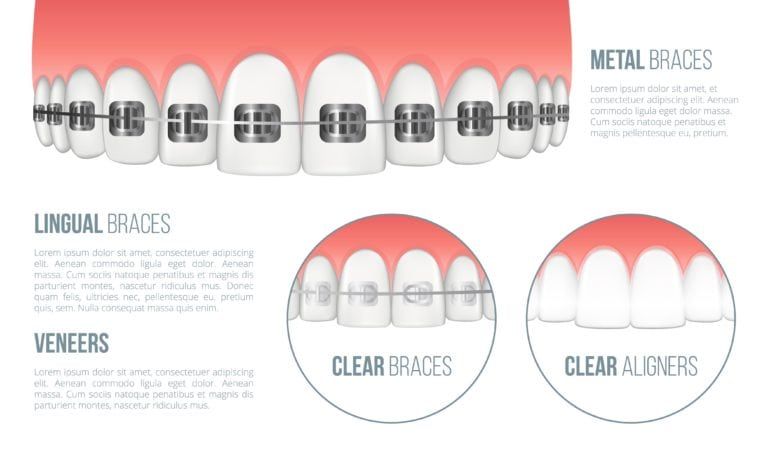Different Types of Braces

Most people will elect to have braces at some point in their life to help straighten their teeth and properly align their bite. Although most people tend to envision traditional braces as being the only kind of braces, there are actually several types of braces available. Dr. Tartakow will assess your orthodontic needs and help you find the correct type for you. Listed below are the five most popular types of braces.
Metal or Traditional Braces:
This is the type of braces that most people are familiar with. Metal, or traditional, braces use metal brackets that are firmly attached to the teeth with flexible metal wire threaded through the brackets to apply pressure to move the teeth. This method is both the least expensive and the fastest method for moving teeth and it is commonly used for these reasons.
Invisalign:
These are commonly called “invisible braces” because they can hardly be seen. Invisalign braces use a series of custom designed aligner trays that apply pressure to the teeth in order to move them. These trays can be removed during meals and to be cleaned. Invisalign is far more comfortable than traditional braces, but it is also more expensive.
Ceramic Braces:
Ceramic braces are similar to traditional braces in that they use brackets and wires to apply pressure to move the teeth. The main difference is that the ceramic brackets are similar in both color and texture to the teeth. Also, the wire is the same tooth color, so the entire treatment was almost invisible and blended with the mouth more than traditional braces. They are generally slightly more expensive than traditional braces, but they provide the same rapid treatment. However, these braces had the same discomfort level as traditional braces and could stain if not cleaned properly.
Lingual Braces:
Again, these are similar to traditional braces in that they use brackets and wires to apply pressure to move the teeth. The difference here is that lingual braces are placed on the inside of the teeth instead of on the outside. This makes them far less noticeable, as they can only be seen when the person opens their mouth. Lingual braces are not often used because they are hard to keep clean and can negatively affect speech more so than other types of braces. They are also more expensive and treatment with lingual braces takes longer.
Self-Ligating Braces:
These also use the bracket and wire system, however their brackets have clips or doors to hold the wire in place instead of using the rubber band tie system that traditional braces use. Because of this, they generally have less food get stuck on them, can be more comfortable than traditional braces, and can result in fewer trips to the orthodontist.
Ultimately, figuring out what type of braces will work best for you depends on your orthodontic needs, budget, and personal preference. To find out more about how the various types of braces will work for you, schedule a consultation with Dr. Tartakow today!